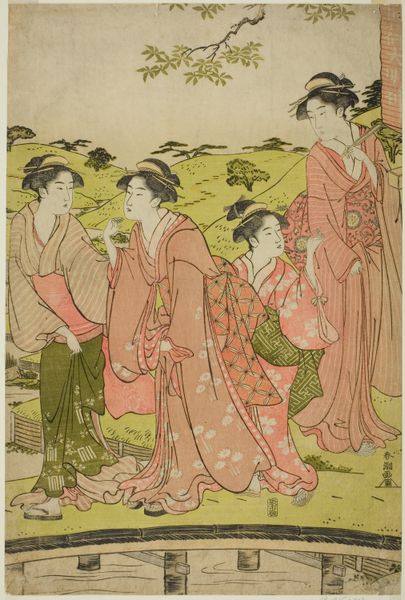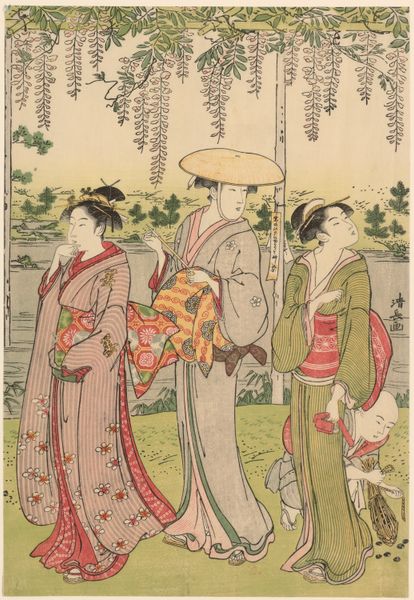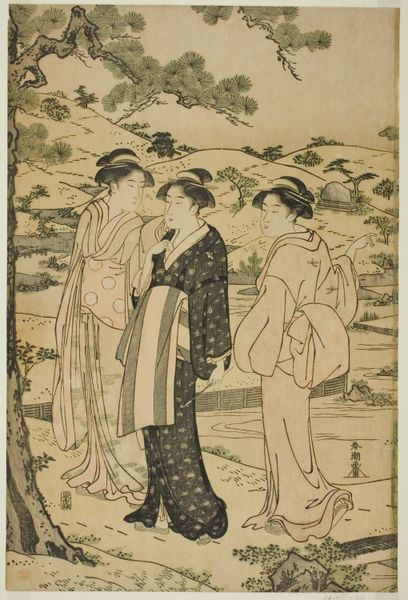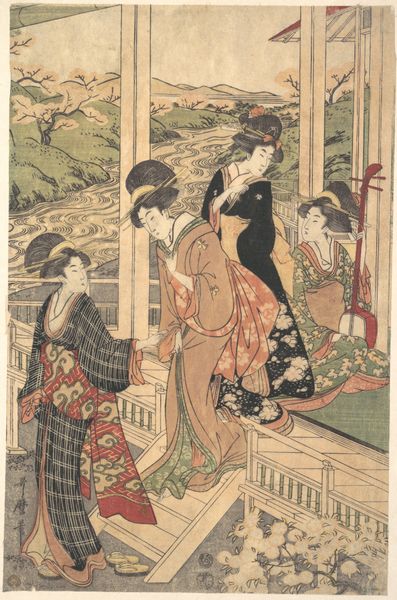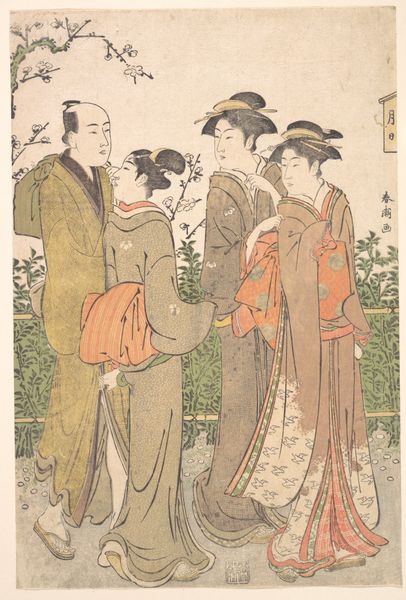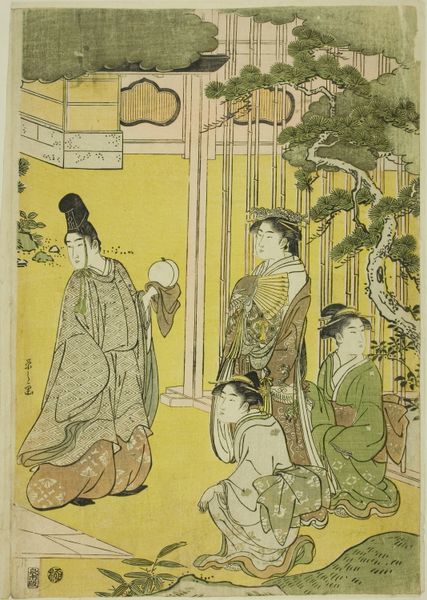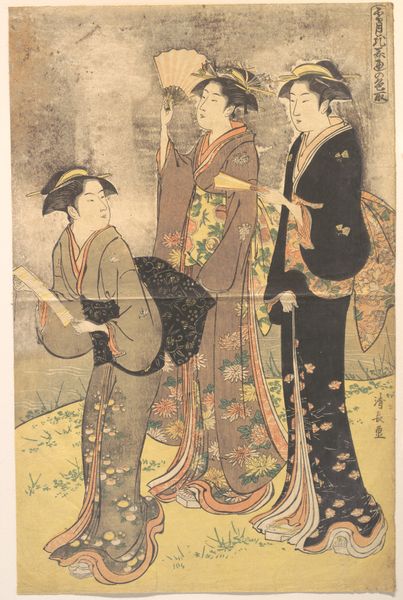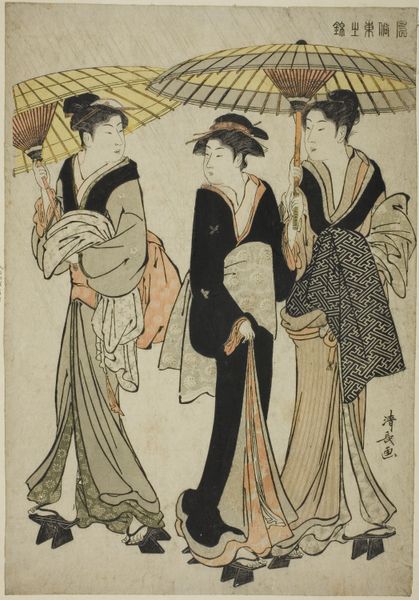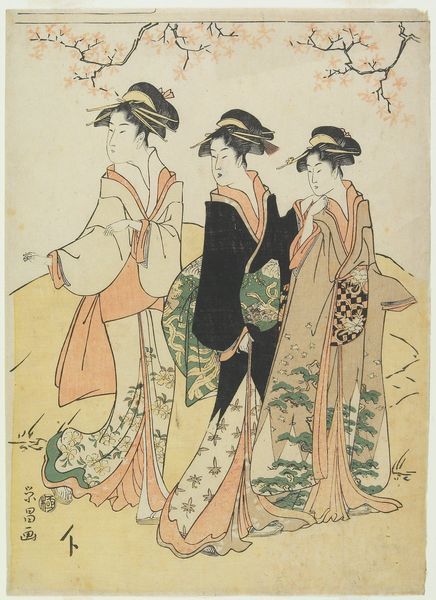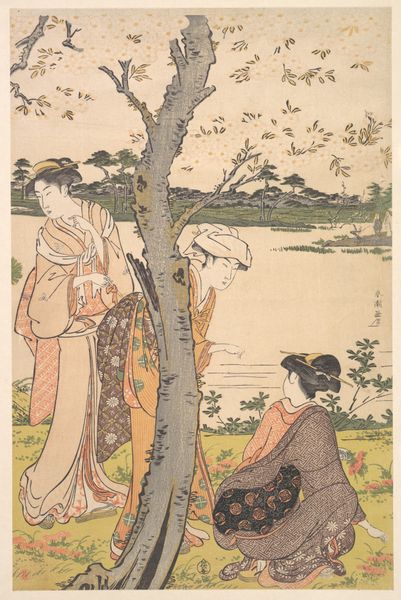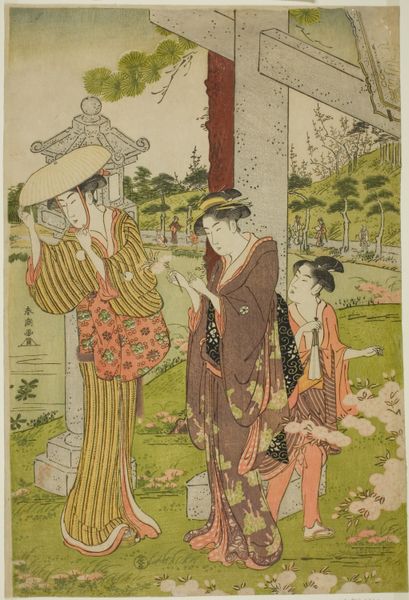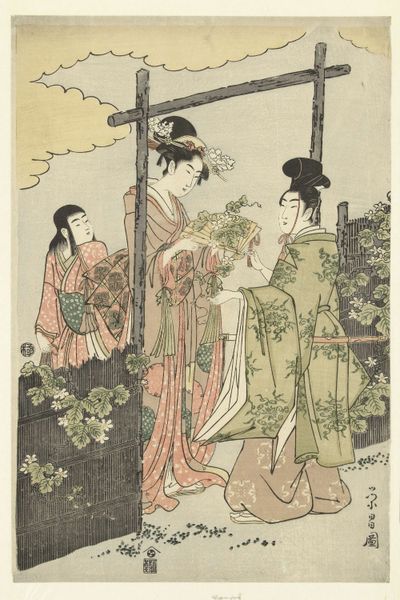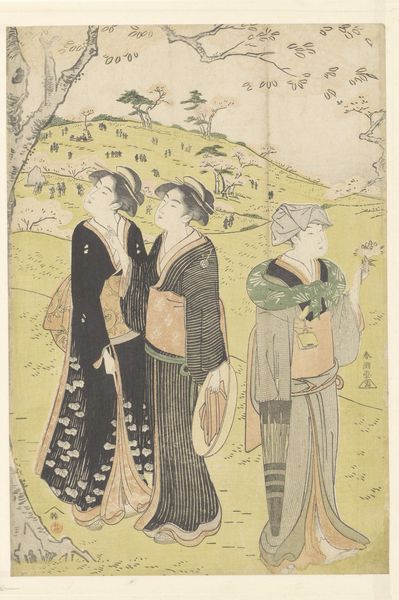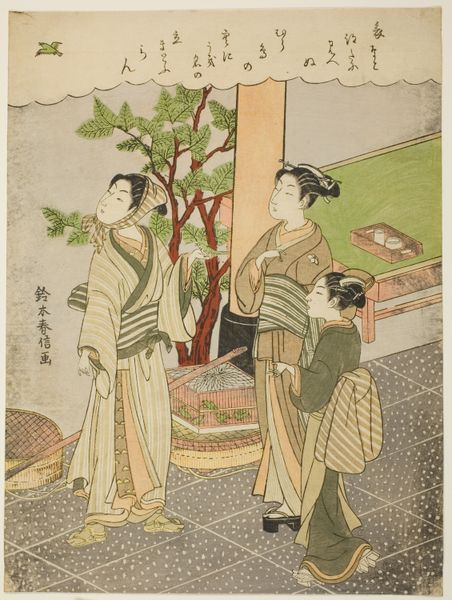
Three Women and a Small Boy beneath a Wisteria Arbor on the Bank of a Stream 1780 - 1800
0:00
0:00
#
portrait
# print
#
asian-art
#
landscape
#
ukiyo-e
#
figuration
#
genre-painting
Dimensions: 15 x 10 1/8 in. (38.1 x 25.7 cm)
Copyright: Public Domain
Editor: This captivating print, “Three Women and a Small Boy beneath a Wisteria Arbor on the Bank of a Stream,” created by Torii Kiyonaga around 1790, using woodblock print, is displayed in the Metropolitan Museum. I find the scene incredibly serene and elegant. What's your perspective? Curator: Looking through a materialist lens, this ukiyo-e print presents a fascinating interplay between production, consumption, and social hierarchy. We must consider the meticulous labor involved in carving the woodblocks for each color, the paper's sourcing and preparation, and the societal context surrounding its consumption. Editor: So you're focusing on the tangible creation of the artwork itself? Curator: Precisely. Consider the socio-economic conditions that made these prints desirable commodities. The depicted scene of leisure – wisteria, fine garments, a child attendant – speaks volumes about the values and aspirations of the emerging merchant class who fueled the ukiyo-e market. How does the printing process impact our reading of the final artwork? Editor: I hadn’t thought about it that way. It’s easy to get lost in the beautiful figures. Considering it’s a print, does that change the artwork’s intended purpose? Curator: Absolutely. These weren't unique, high-art objects displayed in aristocratic halls, but rather multiples produced for a burgeoning consumer base. Their accessibility democratized art to an extent, challenging traditional notions of patronage and artistic value. But, we have to be critical. The representation of these women, possibly courtesans, contributes to the male gaze. What purpose would an artwork like this have for its original male consumer? Editor: Thinking about the social context, that makes total sense. Now, seeing the scene replicated into many identical artworks puts a different perspective on the idea of exclusivity. Curator: Exactly. It transforms a leisurely scene into an object that is both art and commodity. It makes you consider the conditions under which such items could be reproduced. Editor: I’m finding it enlightening to realize how economic and material conditions shape an image's creation and how we read its context.
Comments
No comments
Be the first to comment and join the conversation on the ultimate creative platform.
